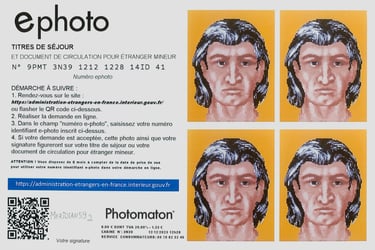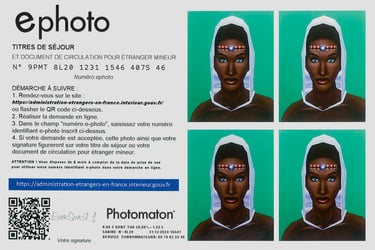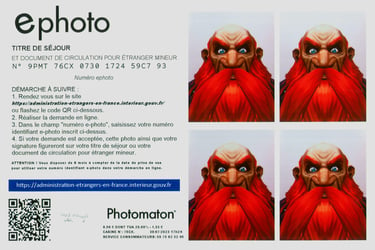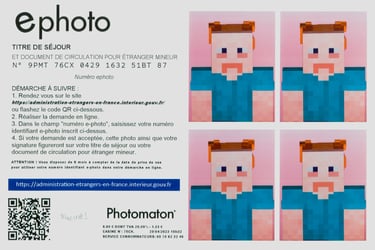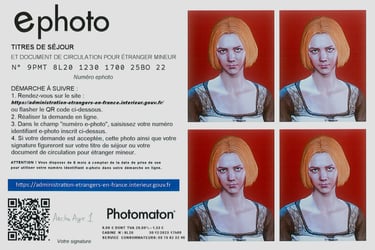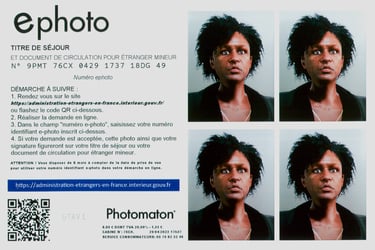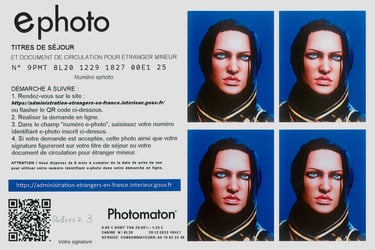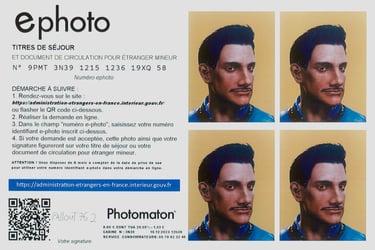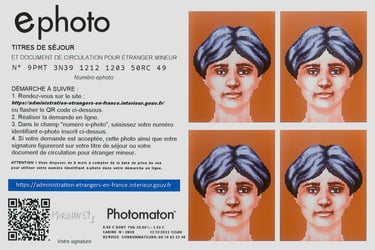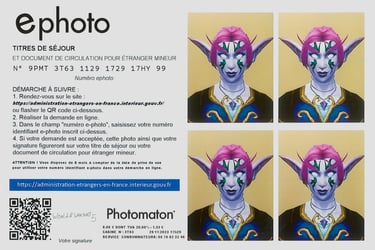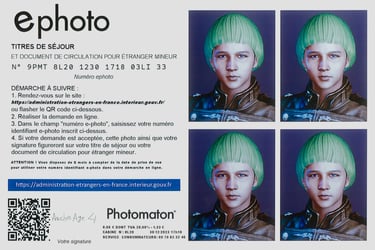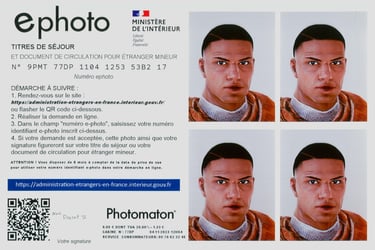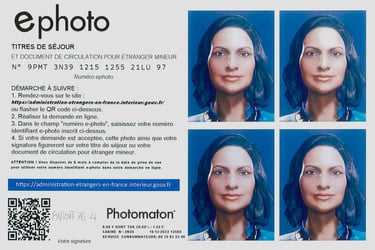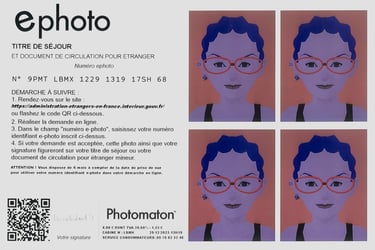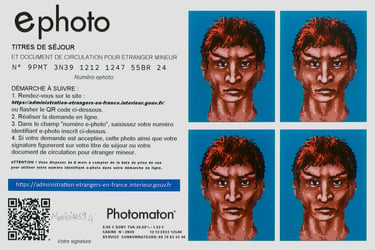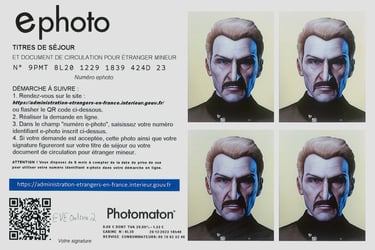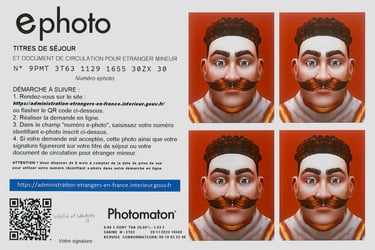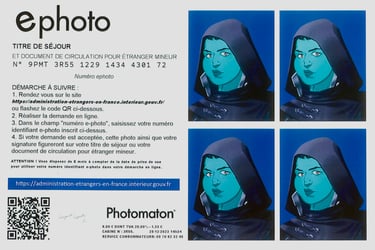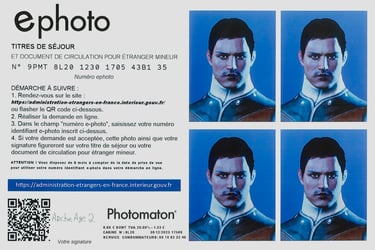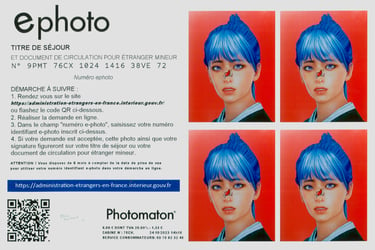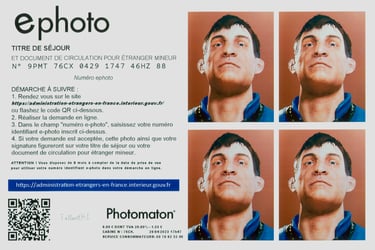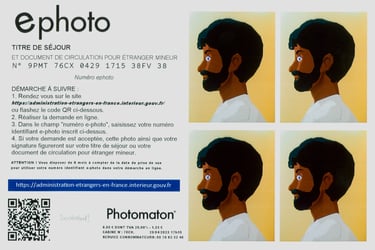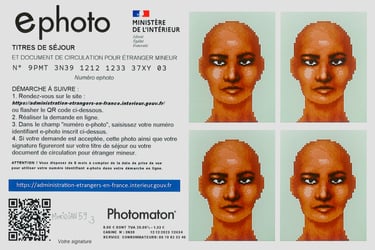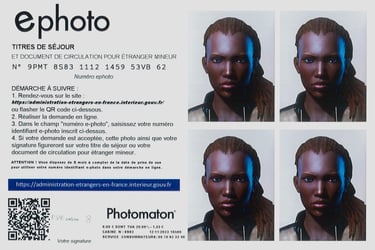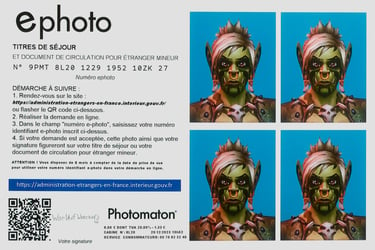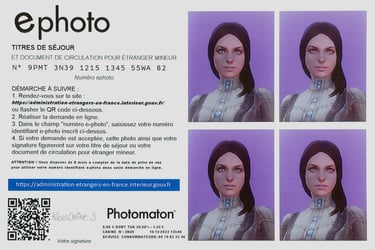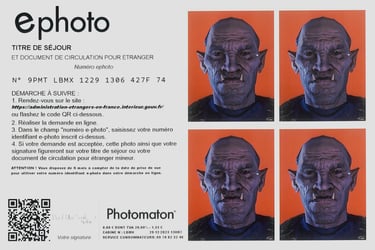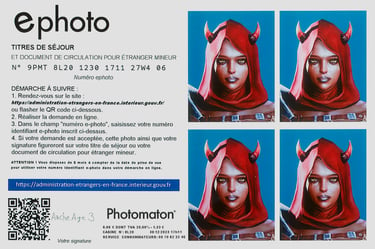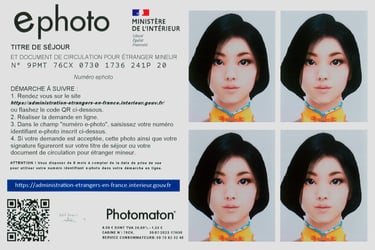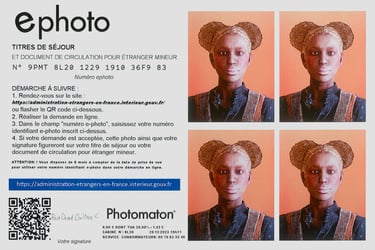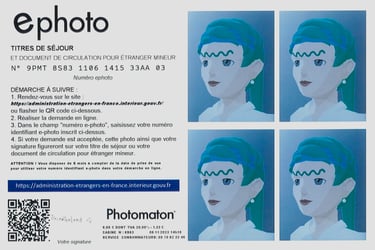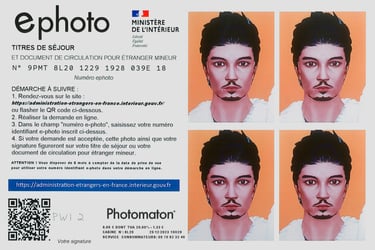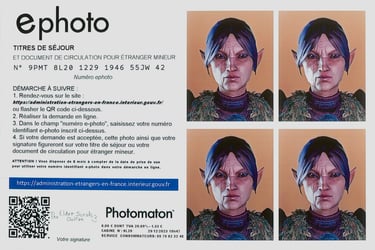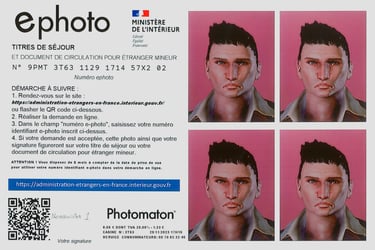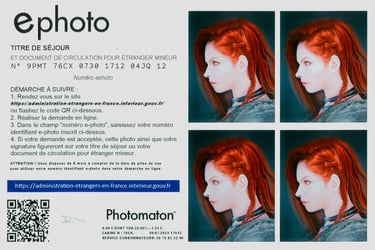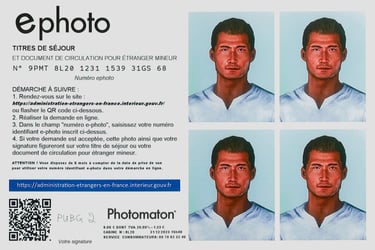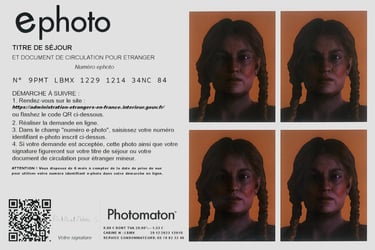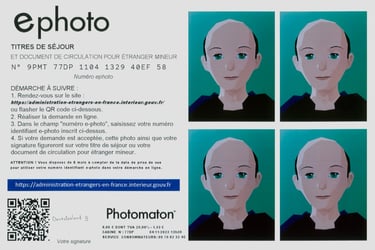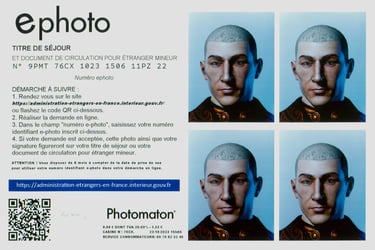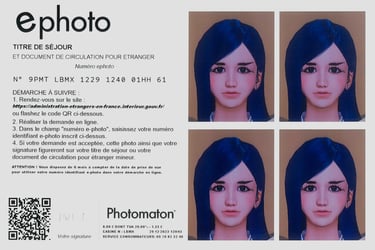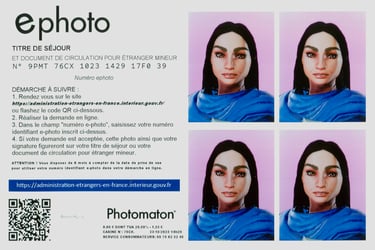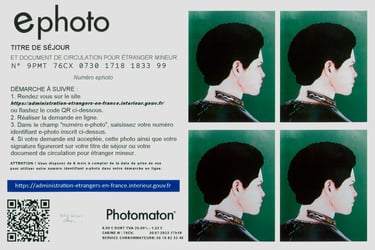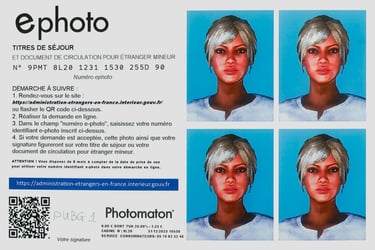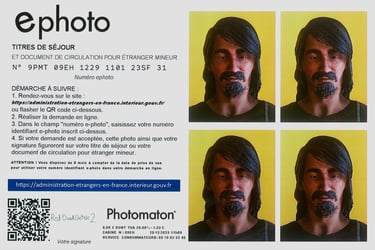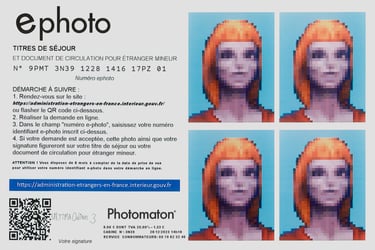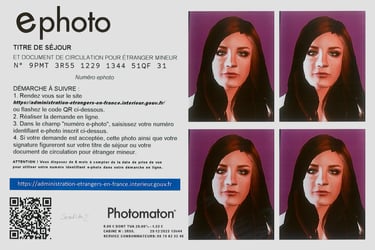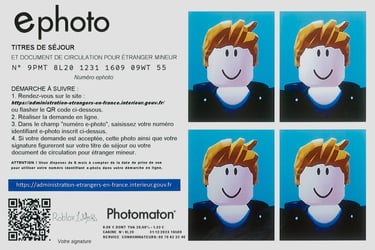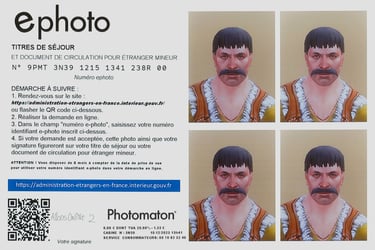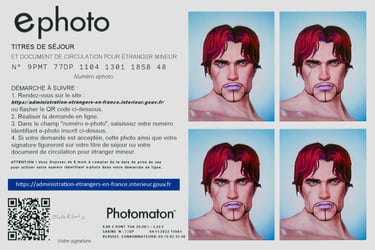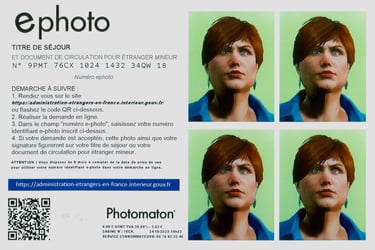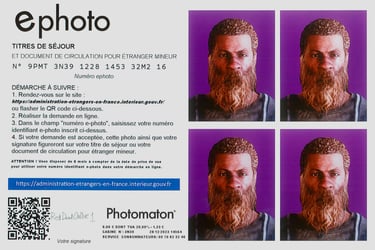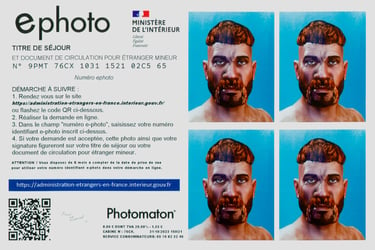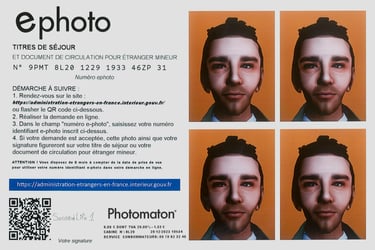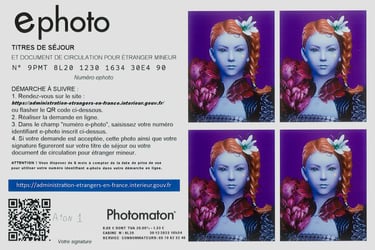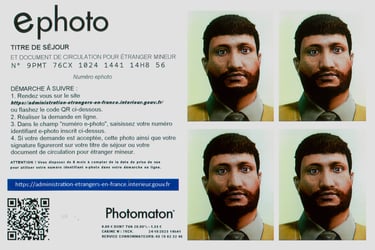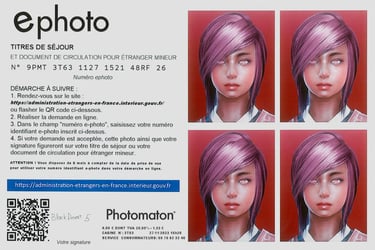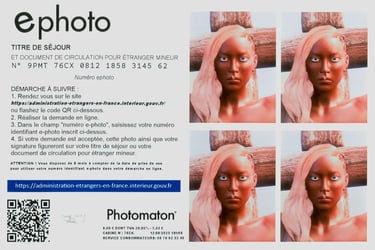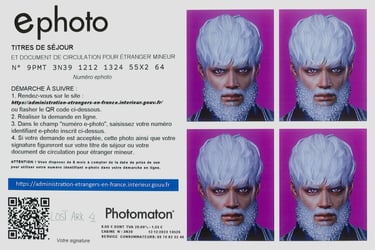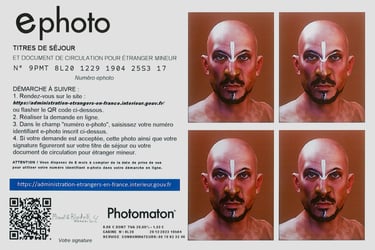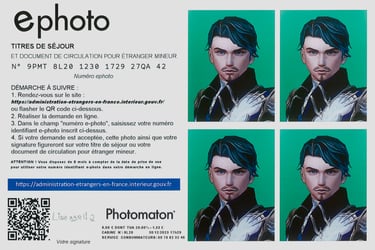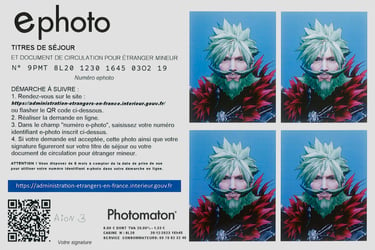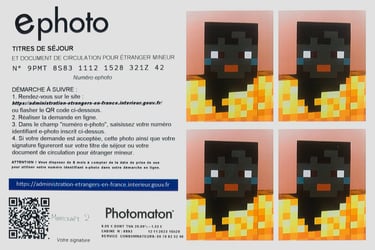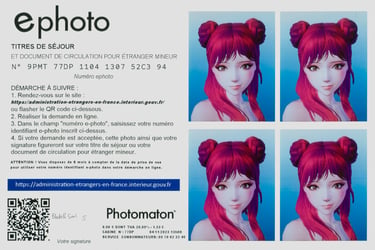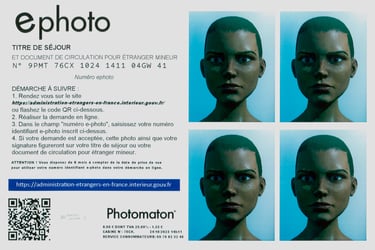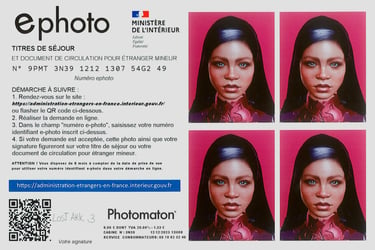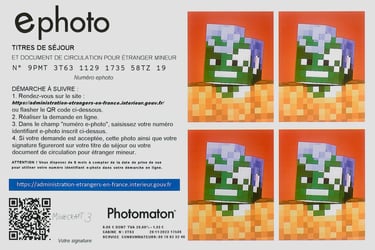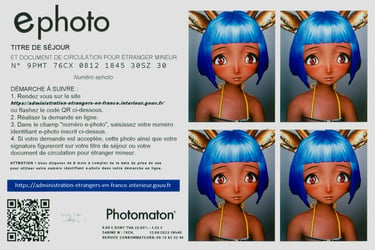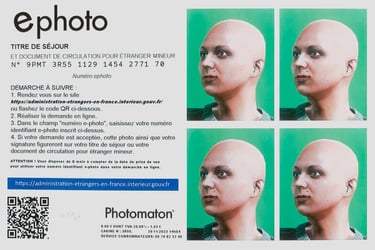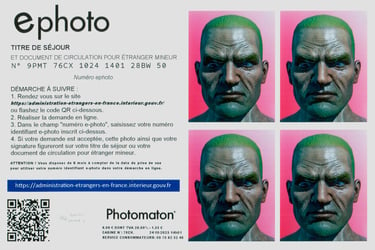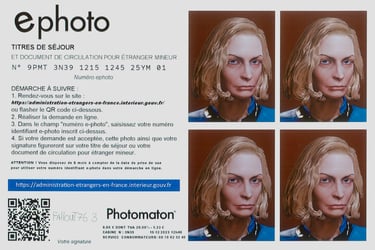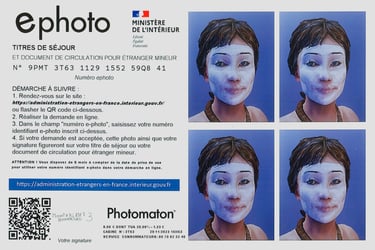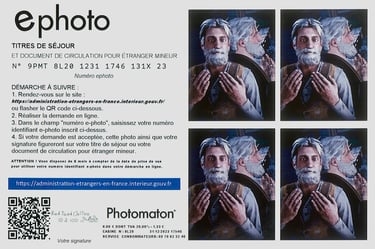ID 2.100.
2023
Virtual Photography
Photomaton, ePhoto
10 × 15 cm
ID 2.100. uses the “residence permit” mode in ePhoto / Photomaton booths to produce ID photographs of avatars from multiplayer video games, carefully reconstructed by the artist after real refugees based on international photojournalistic images. Each picture goes through the same protocol as a standard ID photo, receives a digital code and is stored in the database, so that virtual faces literally enter the infrastructure of official documents. The project asks what a portrait is today: the material photograph on our papers, the virtual avatar, or the sum of our images scattered across games, social networks and state identification systems.
ID 2.100. (Identity 2.100.) is a photographic project by Maxim Zmeyev composed of a series of images made in an ePhoto / Photomaton booth used to obtain a French residence permit. For this project, the state facial-recognition system is “hijacked”: instead of real individuals, the artist presents portraits of avatars created in popular multiplayer video games. These avatars, present throughout the series, were designed by the artist using visual references from documentary photographs of real refugees taken by photojournalists worldwide and published in 2022–2023.
Before entering a new virtual world, every player creates an avatar – their appearance and how they will be perceived by others. Character editors in games and metaverses, from Minecraft to GTA V, allow users to shape figures ranging from blocky pixels to photorealistic bodies. Once created, the avatar is admitted into the game world, where the player has to survive, earn money, communicate and play. In the physical world, a person’s “avatar” becomes their ID photograph on official documents, granting access to rights such as living, working, travelling and receiving healthcare.
Like many others in 2022, the artist became a refugee. According to the UN, the number of forcibly displaced people exceeded 100 million that year, partly due to the war launched by Russia against Ukraine. Since November 2022, he has been living in France and, like countless refugees and forced migrants, is in the process of constructing a new administrative “avatar” by obtaining new identity papers. When he takes a photo for his residence permit in a Photomaton booth, the digital portrait is automatically stored in a national database; a unique numeric code is assigned to it, and the artist’s face becomes part of his official identity.
ID 2.100. investigates the parallels between acquiring identity and constructing subjectivity in physical and digital worlds. The project examines the relationship between the individual and the state, and the infrastructures of social control built around identification, while questioning the materiality and authenticity of virtual photography. It asks what constitutes a portrait today: the material image on a document, the virtual avatar, or the sum of our representations spread across metaverses, online games and social networks.
Each photograph in the project follows a specific protocol: the avatar is first captured inside a game’s character editor, then re-photographed in a Photomaton booth using the “residence permit photo” mode, printed in the booth and finally scanned to create a new digital file. This chain of transformations mirrors the complex bureaucratic procedures that refugees and migrants must endure. The visual artefacts that appear at different stages become metaphors for the fractures, rewritings and displacements experienced by those who are forced to rebuild their identity in a foreign country.
